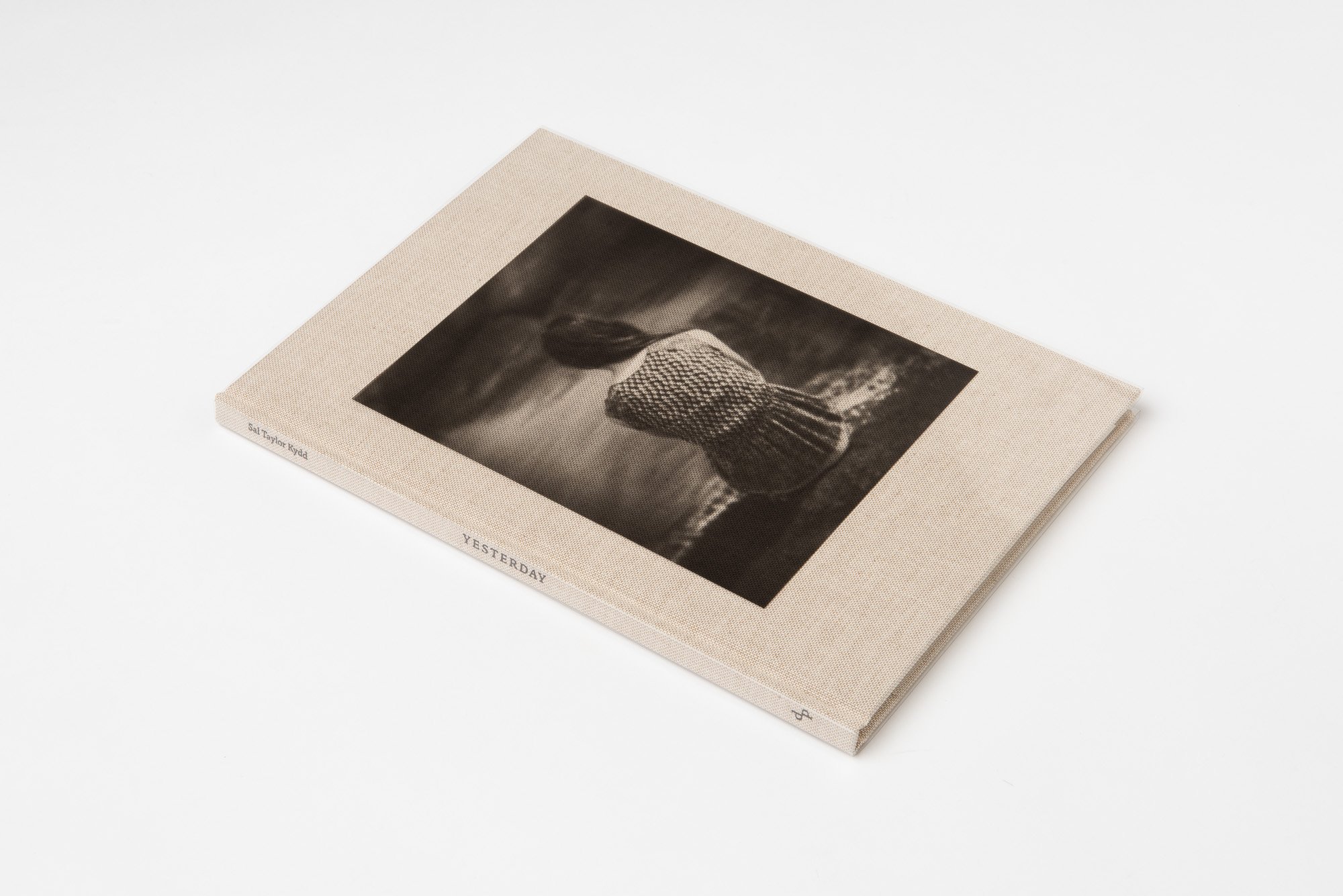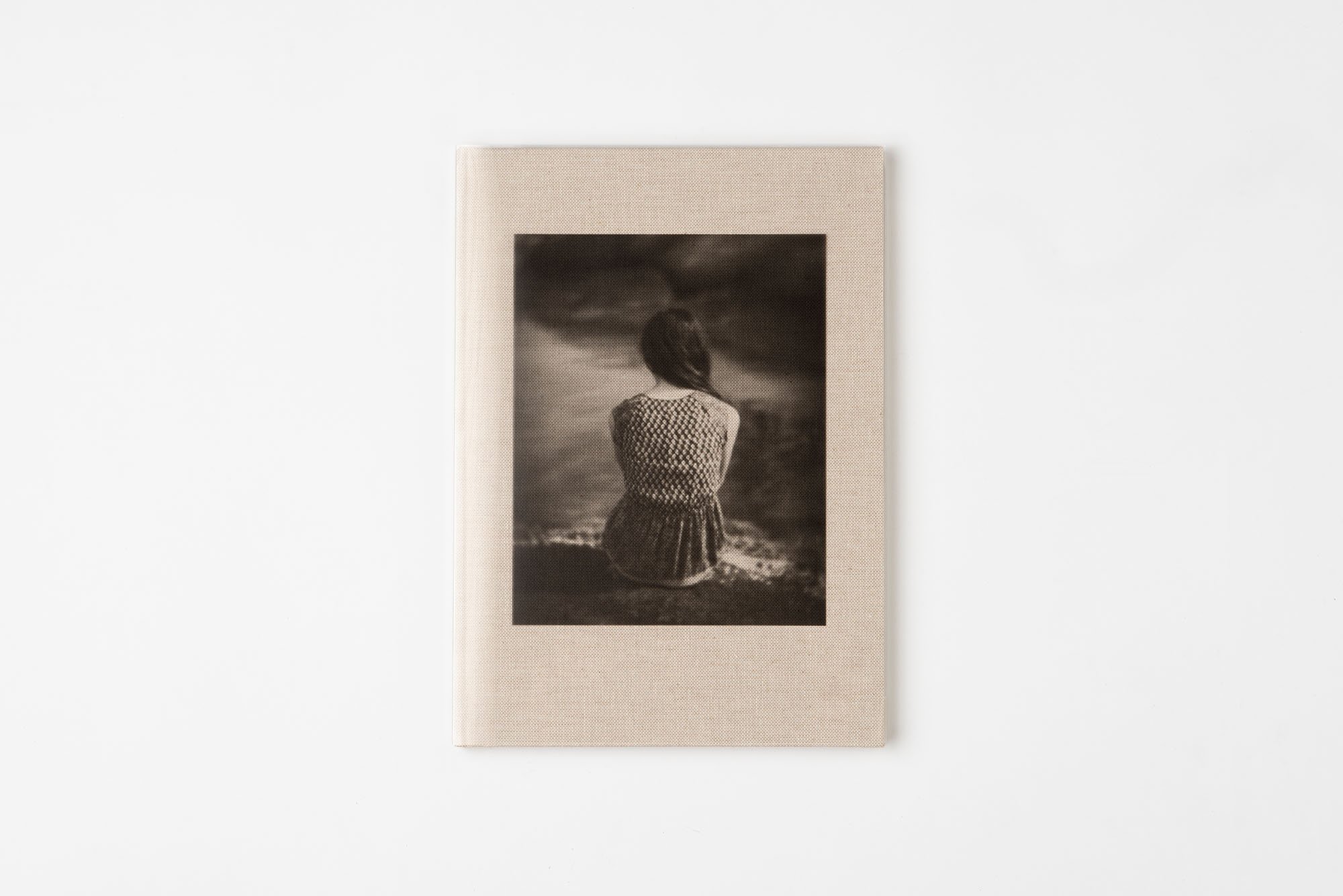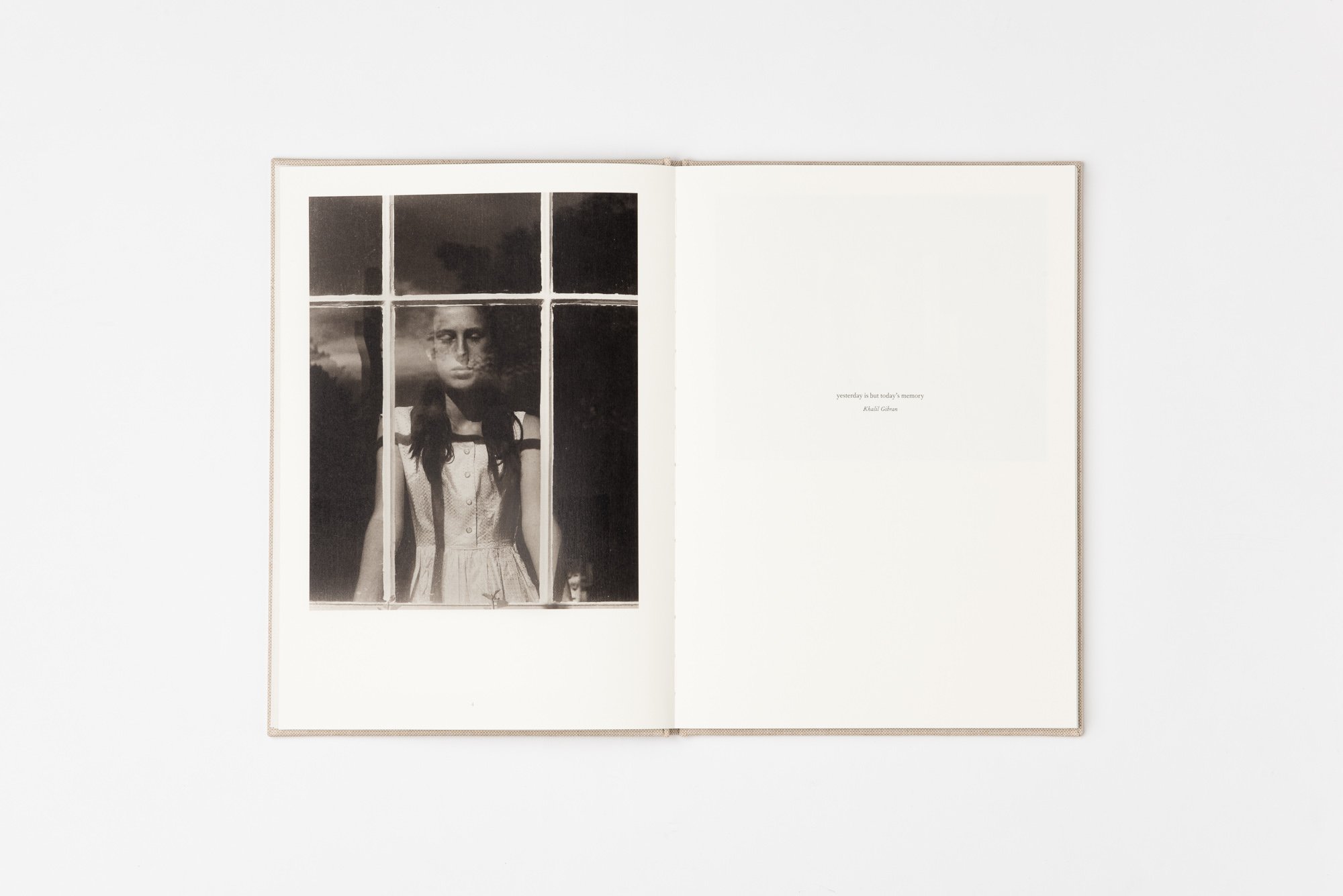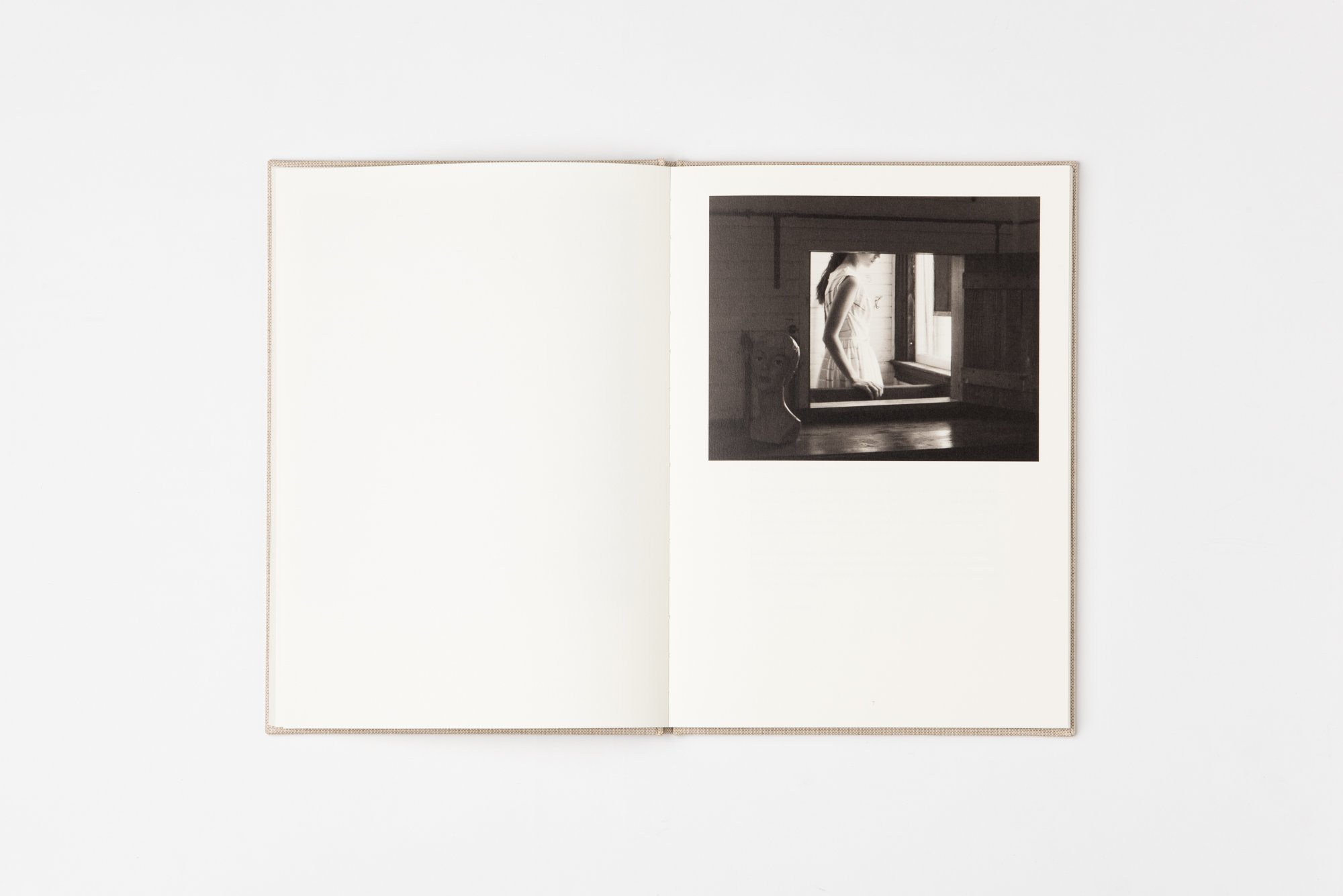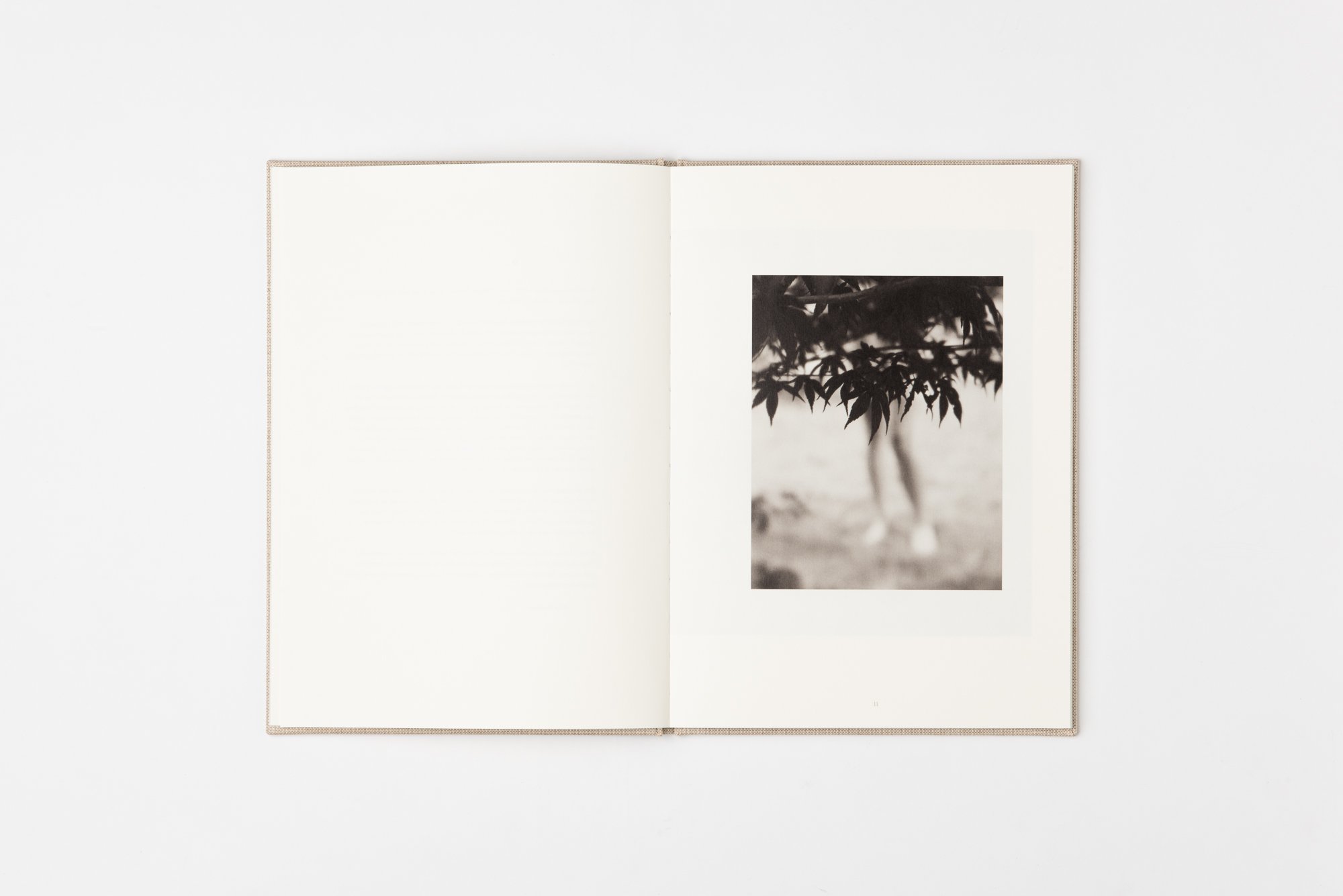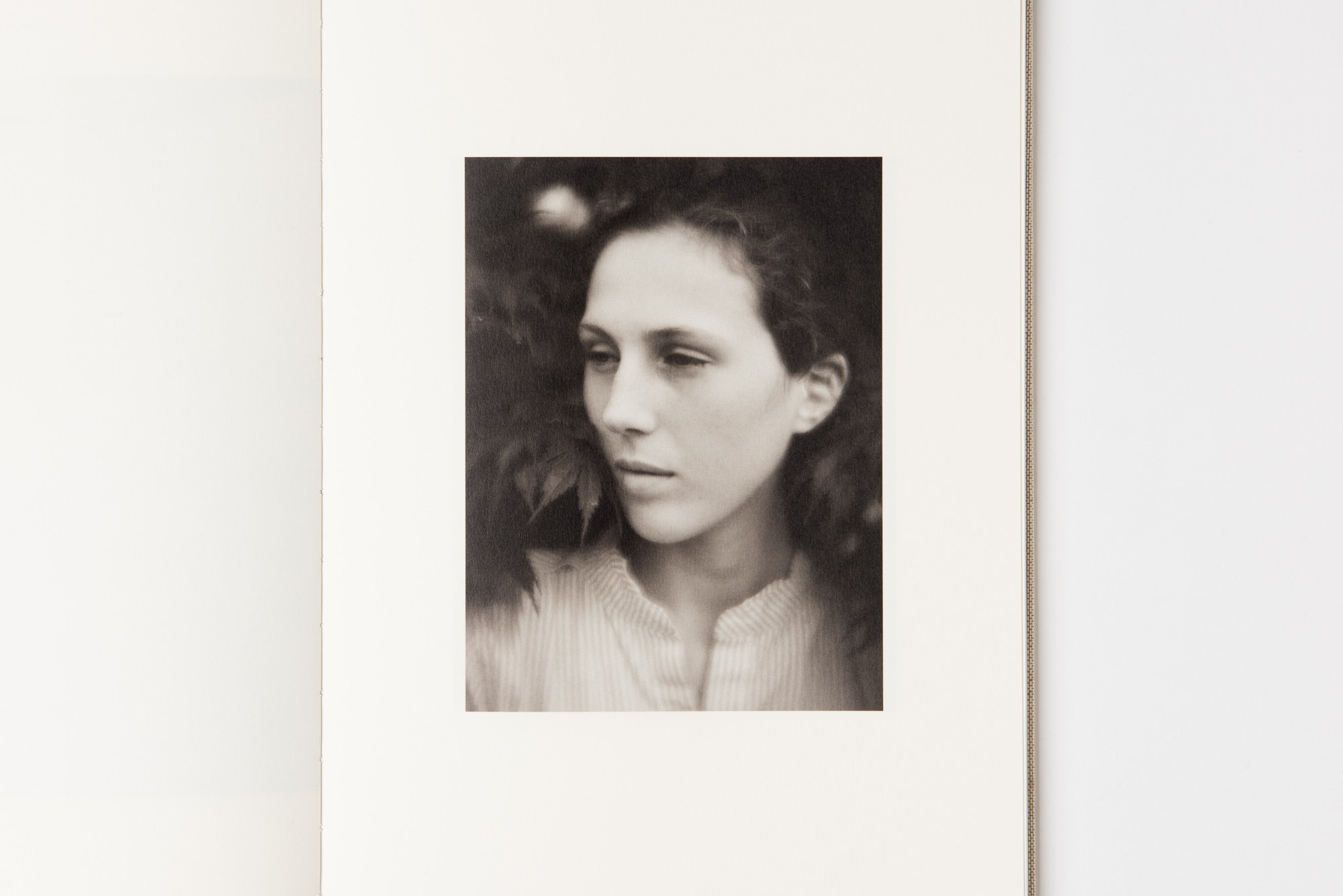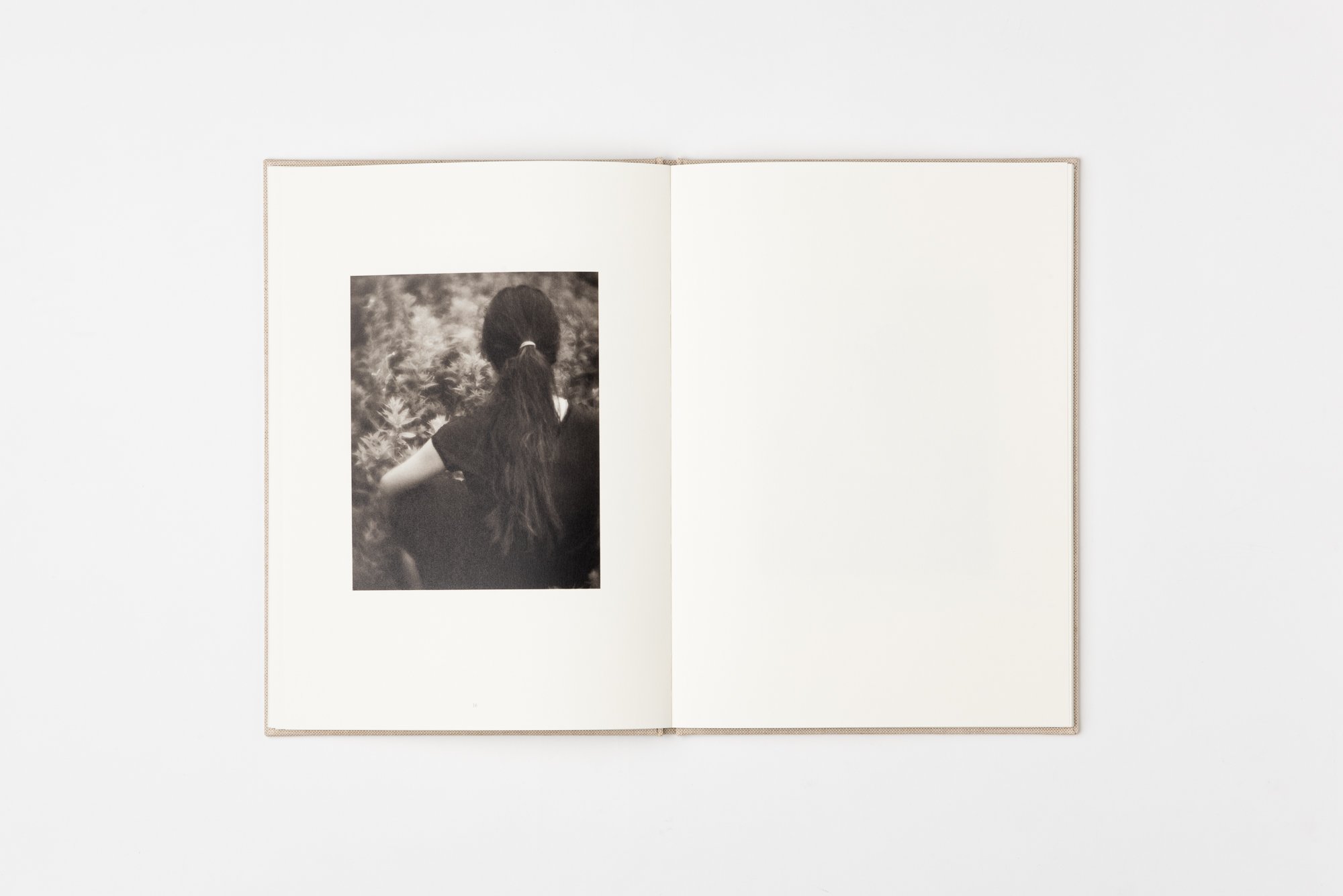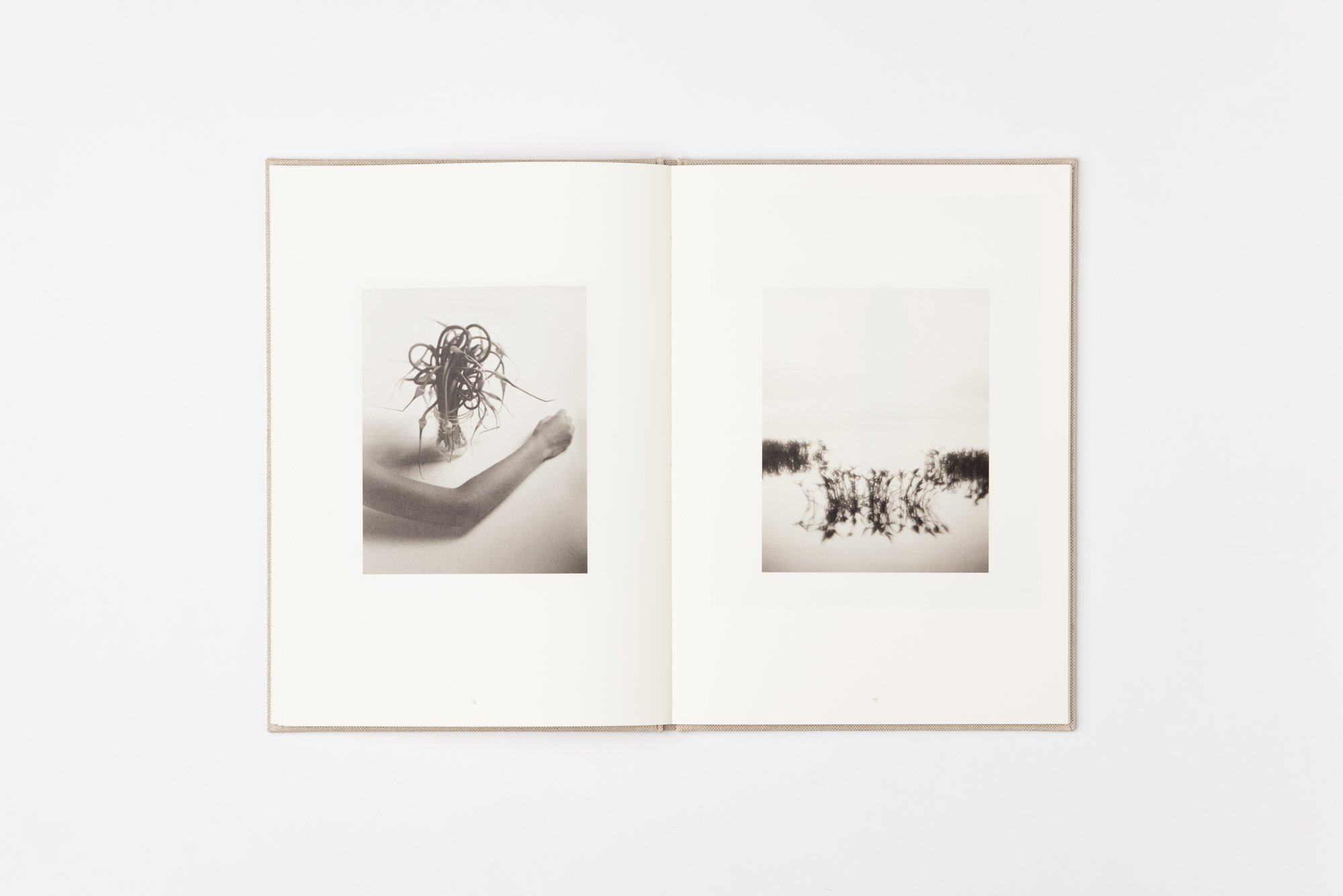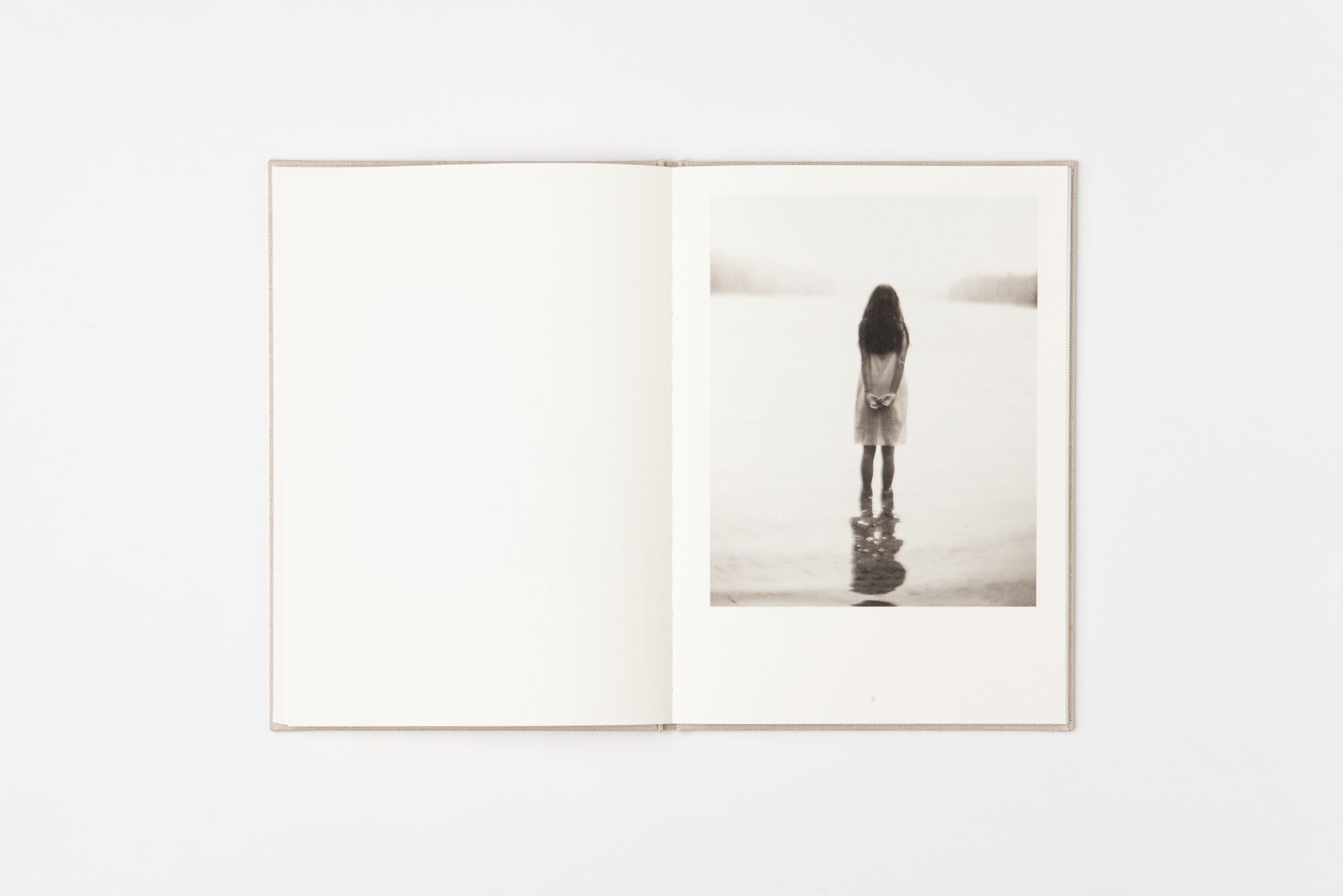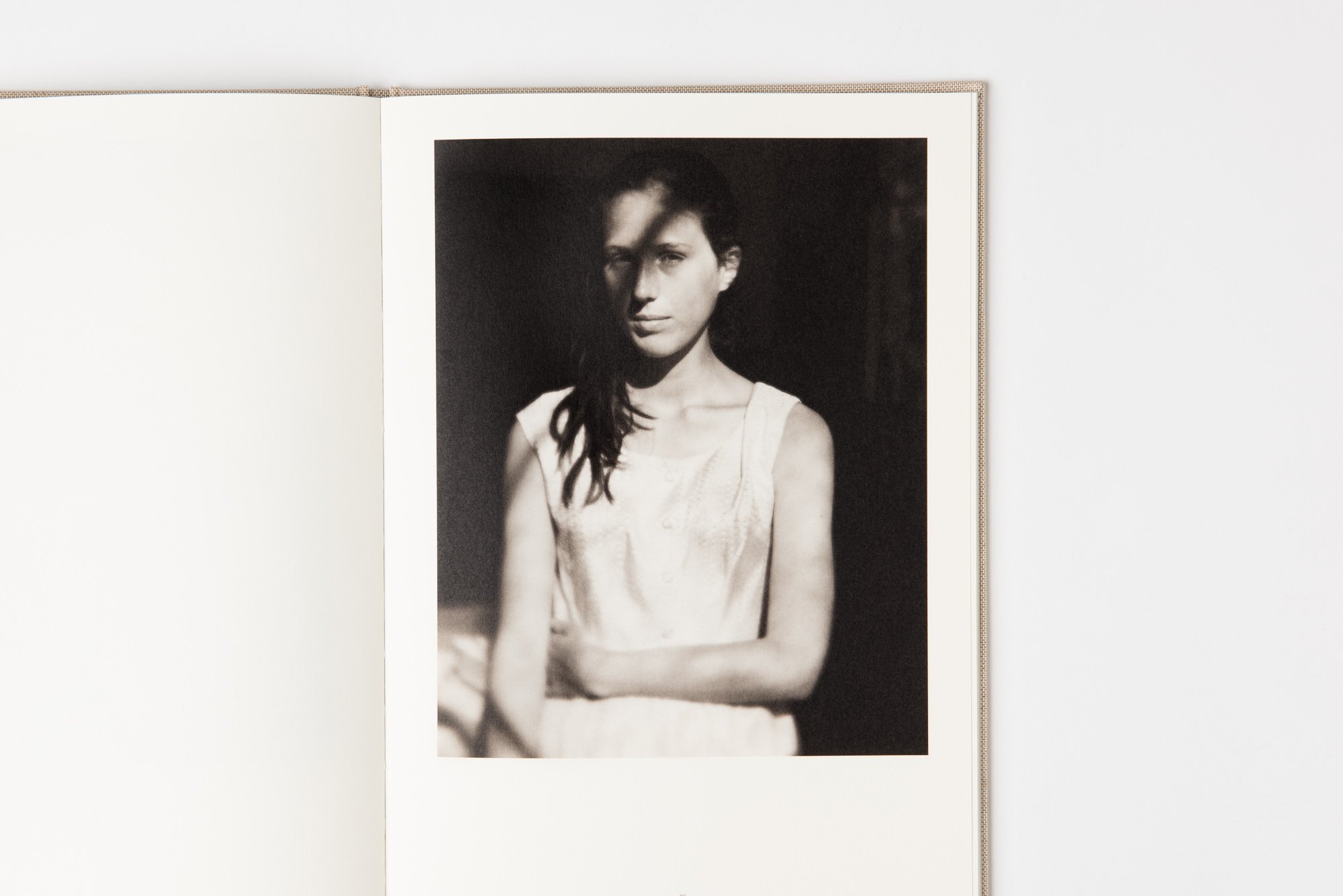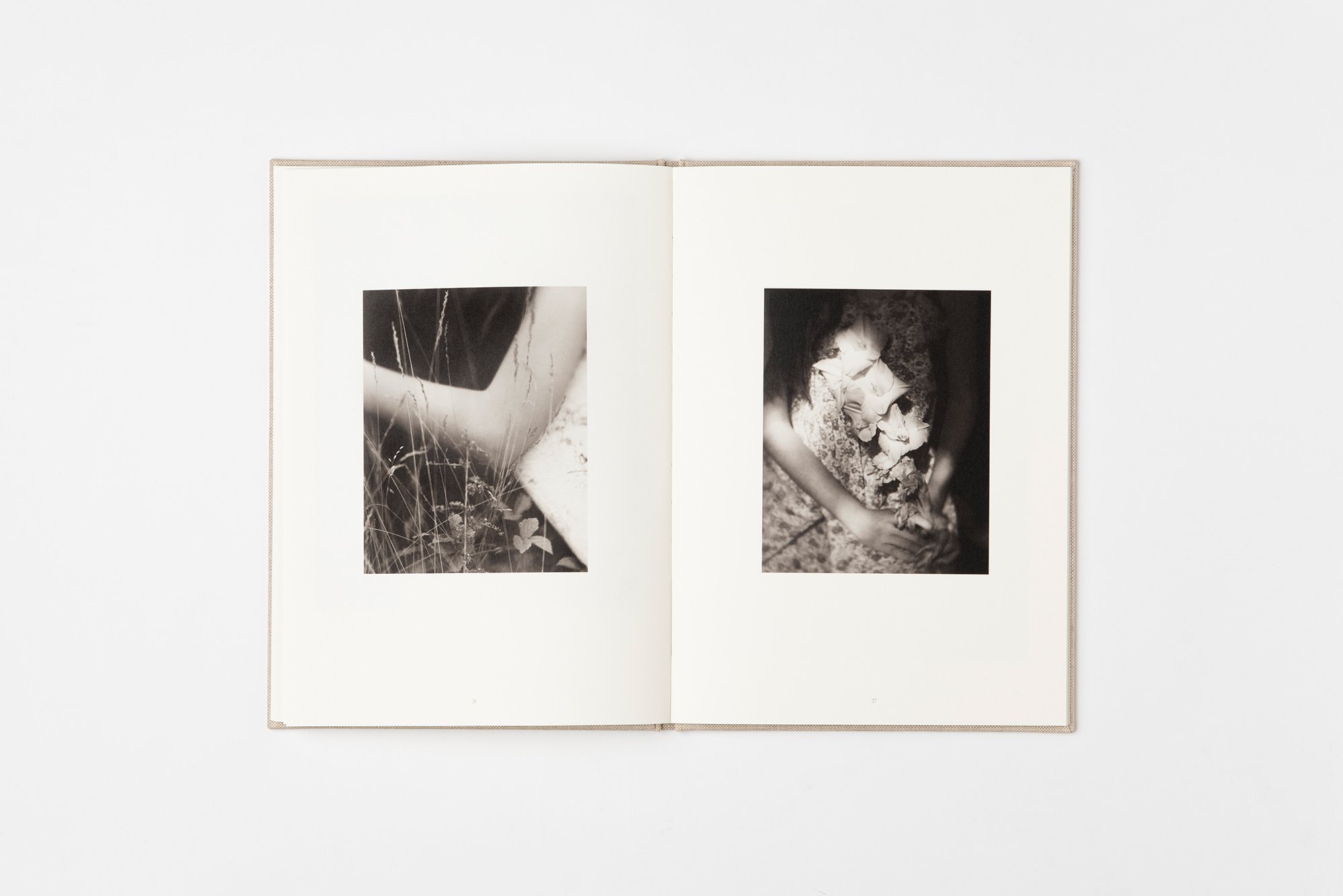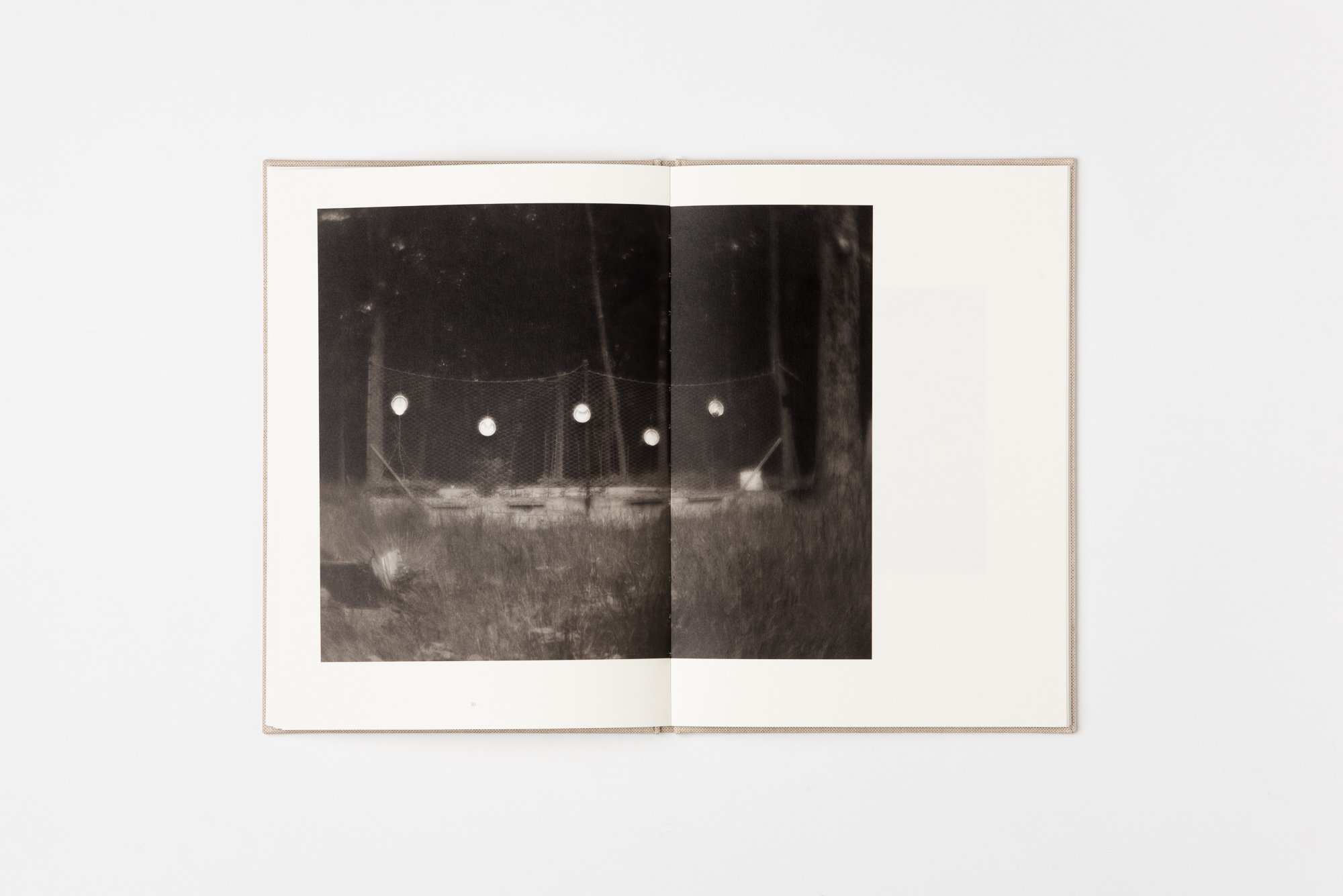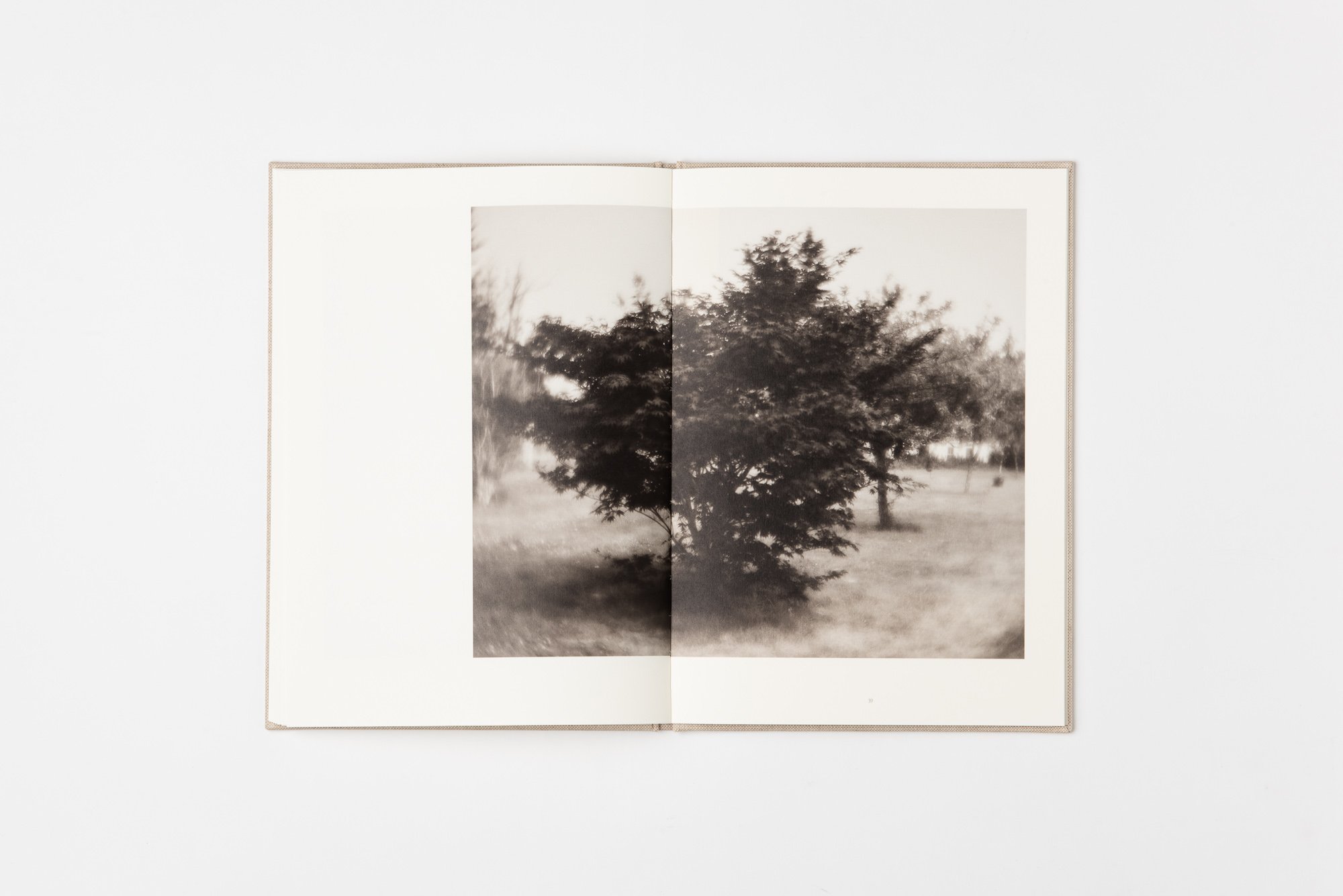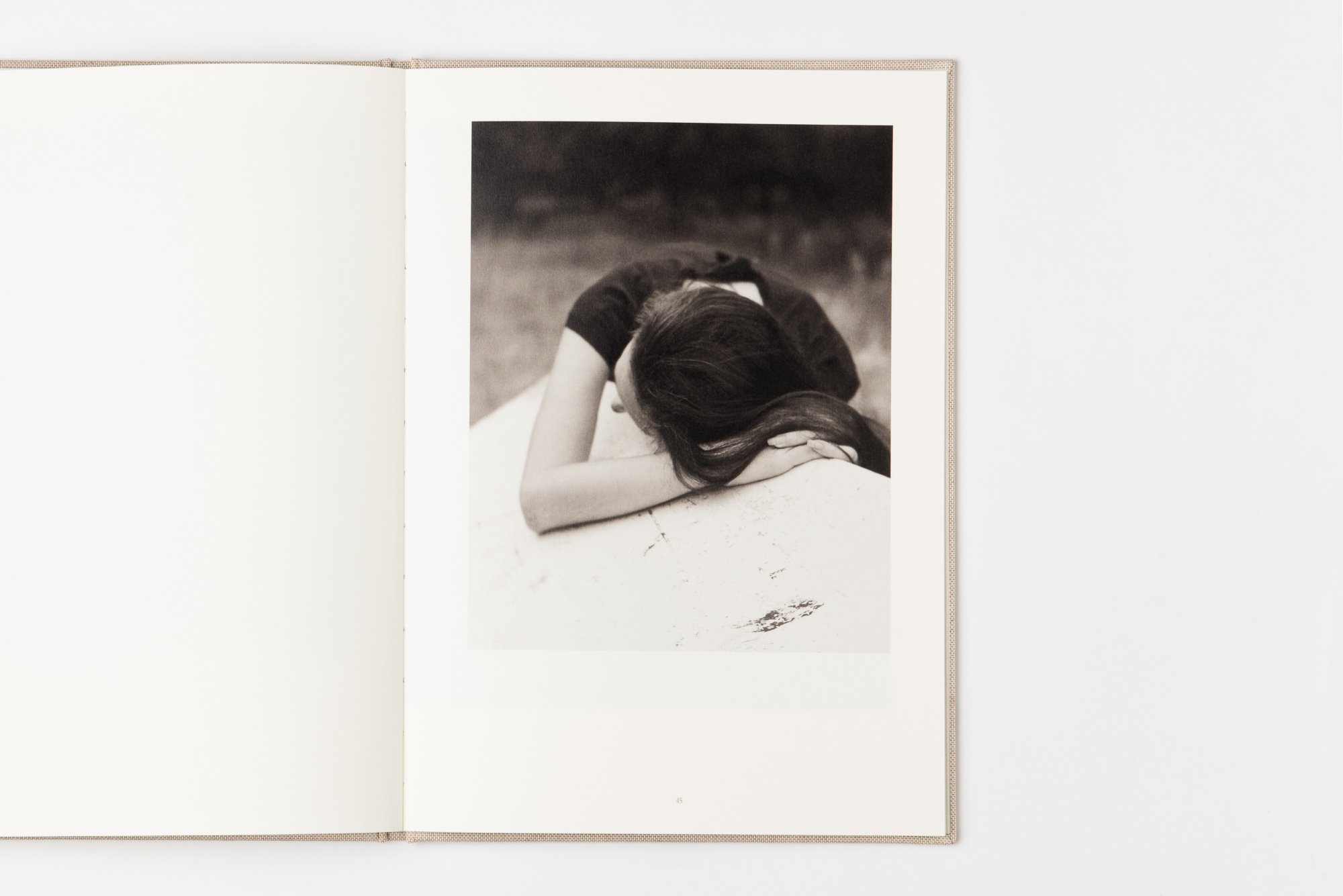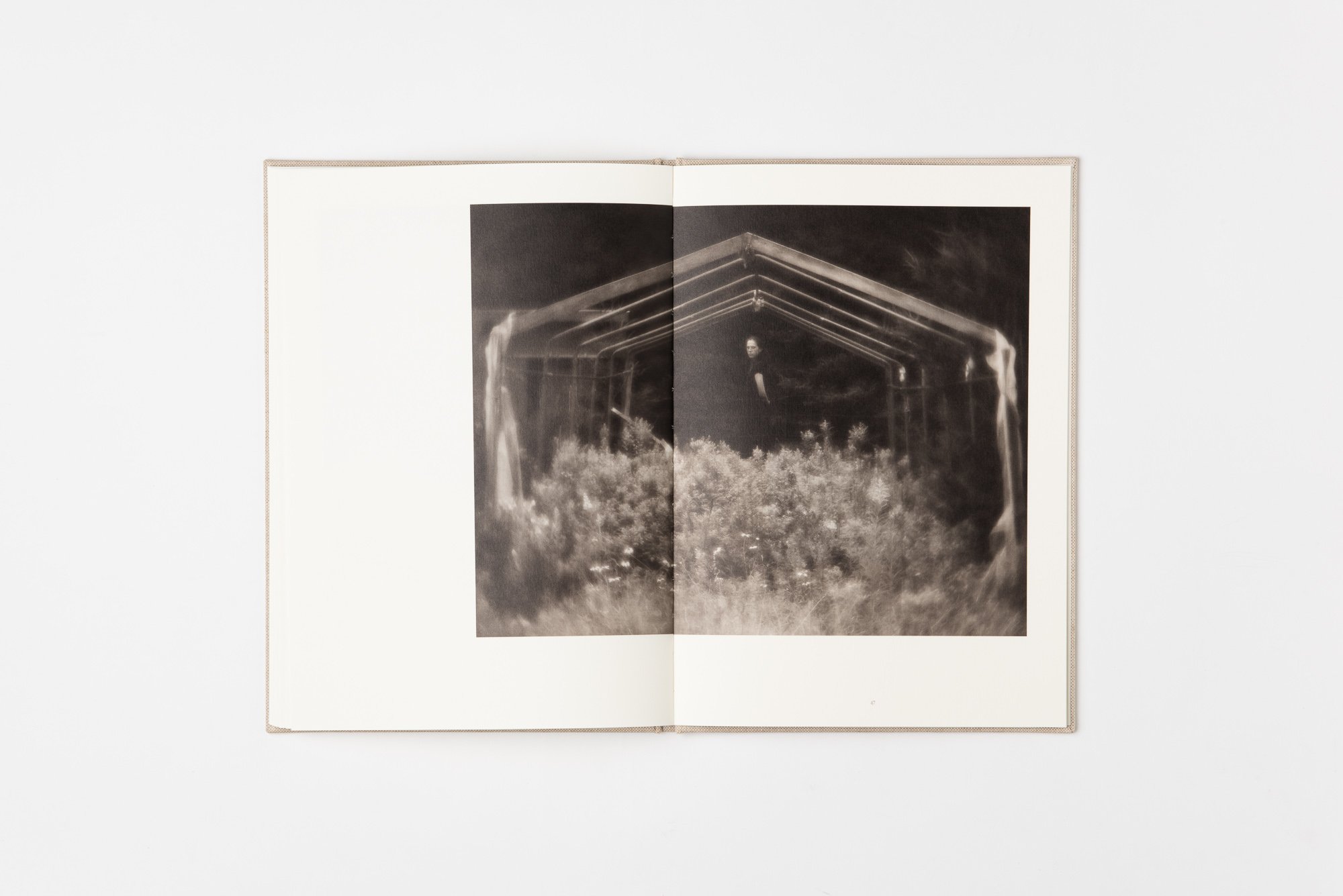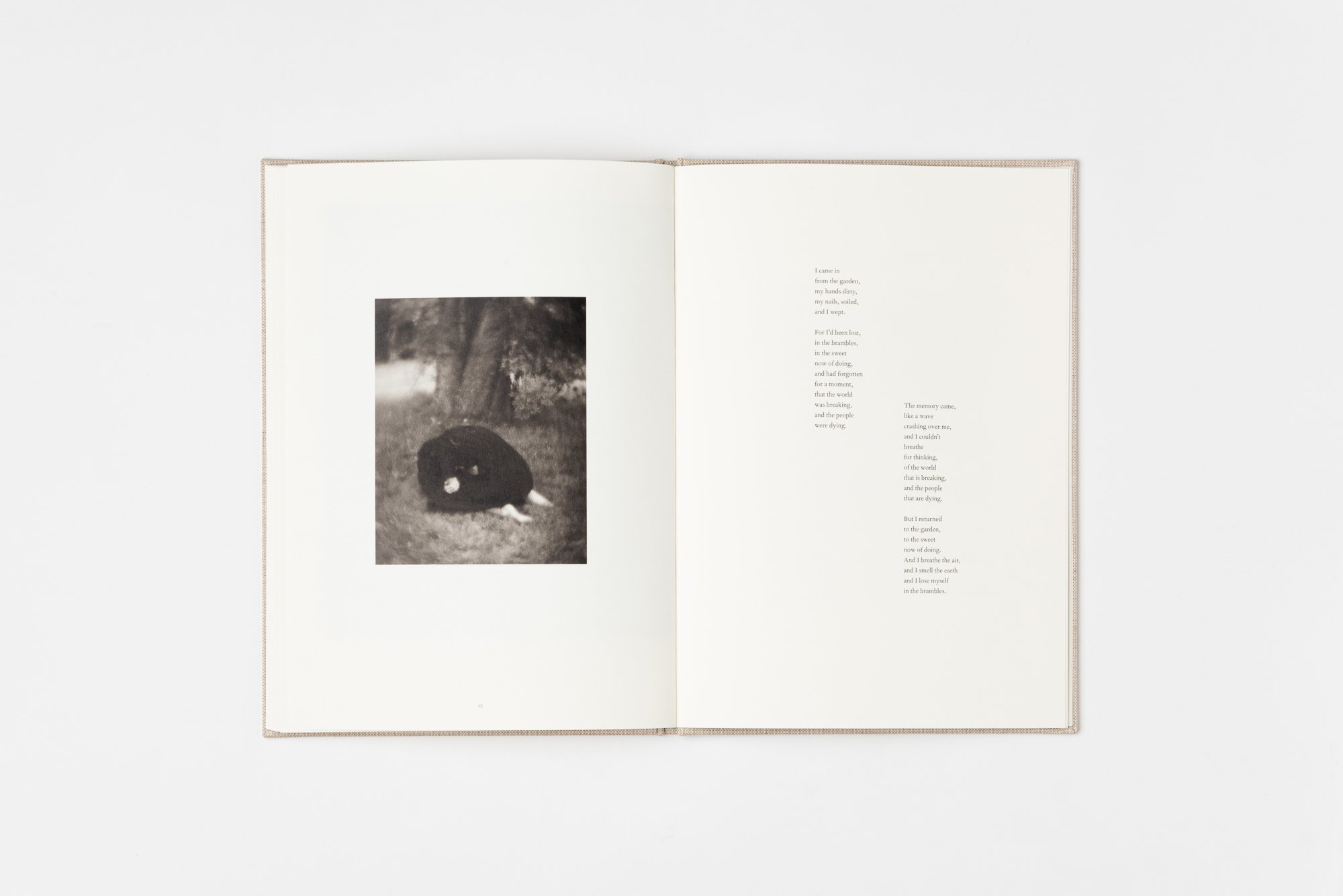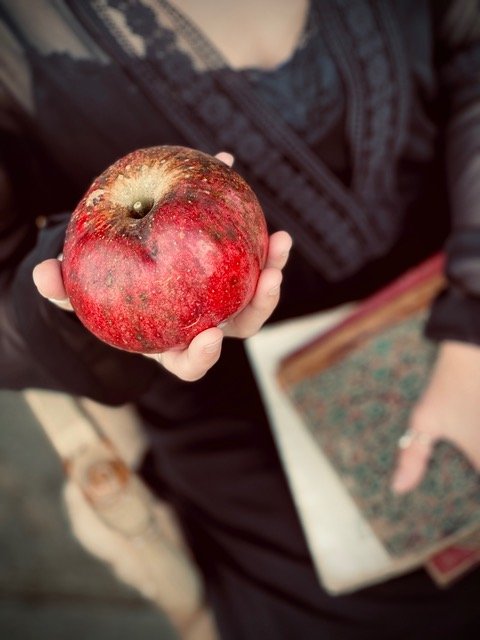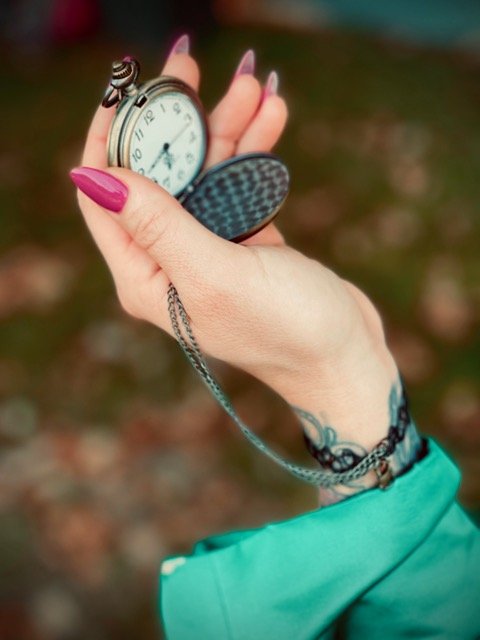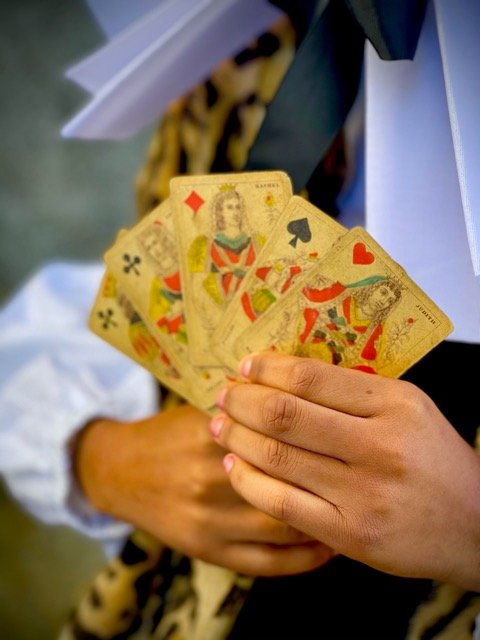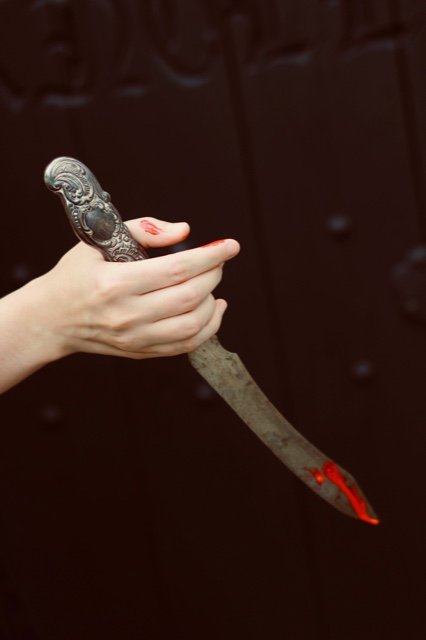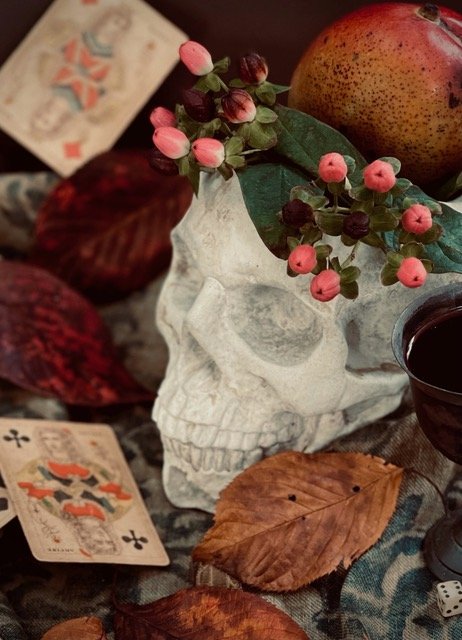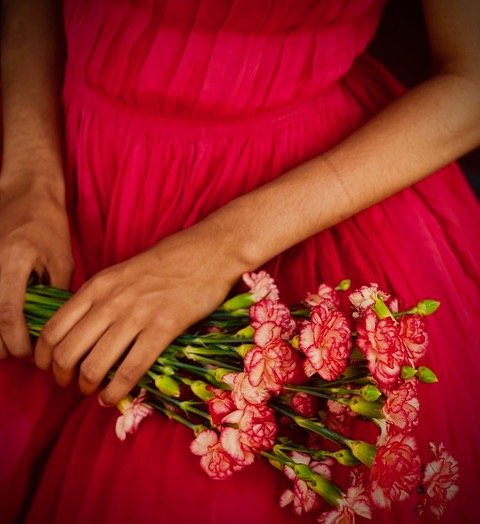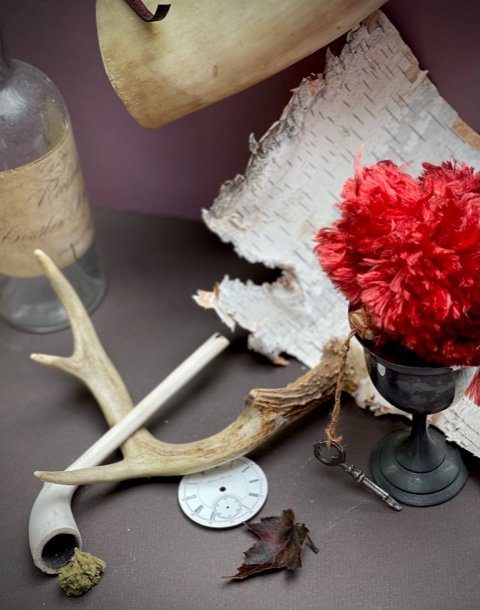Turn of Season
Interview
by Dorothy Parker (1893 - 1967)
The ladies men admire, I’ve heard,
Would shudder at a wicked word.
Their candle gives a single light;
They’d rather stay at home at night.
They do not keep awake till three,
Nor read erotic poetry.
They never sanction the impure,
Nor recognize an overture.
They shrink from powders and from paints ...
So far, I’ve had no complaints.
Book Review
There is something infinitely healing in the repeated refrains of nature — the assurance that dawn comes after night, and spring after winter.
– Rachel Carson
Yesterday
Sal Taylor Kydd
Absorbing this wisdom from Rachel Carson in the introductory pages of Yesterday in the crisp autumn air and with the rhythm of the ocean waves touching the shore of my own little island, reassured me that the world can heal. In her photographs Sal Taylor Kydd turns to nature to explore not only our relationship with nature, but life’s internal struggles and mysteries through quiet vignettes representing our interactions with the natural world. During the summer of 2020 as the pandemic circled closer to our shores, Sal spent time with family in Deer Isle retreating, as many of us did, to remote places that felt safe from the threat... at least for a time. In this elemental world of granite, and spruce trees bathed in briny sea mist, Sal explored the profound sense of loss felt by many of us during this pandemic by photographing a young woman on the precipice of youth who will inherit a world injured by our careless stewardship. Sal’s poetry and quiet, gentle images resulting from their collaboration are full of longing for a more innocent time of yesterday, yet hopeful that if we turn to nature with a more attentive mind we can coexist and heal together.
We enter the world of Yesterday gently, with a transparent book jacket printed with the image, Maiden, photographed from behind, contemplating moving water in the distance. Flowing hair in unison with the water’s motion combined with the ephemeral quality of seeing through to the book’s cloth cover invites one into this world. Slow down, exhale, remember the warm sun on your face and summer grass embracing your bare feet.
Sal Taylor Kydd, Twilight, 2021, Polymer Photogravure, 10 x 8 inches
Aline Smithson introduces us to Sal’s world of Yesterday through eloquent prose expressing the realities of our world and encourages us to “land softly” through Sal’s poetic words and images. Leaning into the sunlit window of the image, Twilight we become aware that we are looking through Sal’s lens into ourselves and what roots us to the earth. As adults we ask, what have we lost, and how can we find a way to rebuild that connection to the land that nurtured us as children? The photographs that follow are like ephemeral memories of that time, moments of exploration, and epiphanies provided through the touch of sweet grass or the barely audible sound of mist from the ocean drifting through distant island’s spruce trees as seen from the shore in Waiting for Tomorrow. Often, when I pick up a book I start flipping through the pages from the back. It seems to me a natural reflex to rest the book in the right hand and let the pages fall from my left hand. But I encourage the reader to resist this common reflex and follow the sequence of Yesterday as it was thoughtfully designed by Sal and Datz Press. You will be rewarded by entering a meditative state as you slowly wander through the tactile pages of soft warm toned photographs that evoke the perhaps forgotten days of the last youthful summer. The subtle design decisions such as the warm, slightly toothy surface of the paper that hold the delicately focused photographs, physically draw you back in time to immerse yourself in Yesterday’s embrace. Once held there, Sal brings us back to acknowledge the present through her poetic expression of grief for the time we live in. Though we weep alongside Sal for our world and what we’ve lost, her photographs give us a reminder that we can face uncertainty to find beauty and strength in the “repeated refrains of nature”. DD
Yesterday has only been printed in edition of 200 with a beautifully rendered signed archival pigment print of Offered – a gift. Visit Sal Taylor Kydd’s web site to purchase Yesterday at https://www.saltaylorkydd.com/
If you are in the vicinity of Camden, Maine now until November 27th, please stop by The Page Gallery at 23 Bayview Street. Here, you will be treated with the original photogravure prints of Yesterday — each one pulled by hand and must be seen in person. Contact the Page Gallery for hours and information at https://www.thepagegallery.com/
Featured Artist: Michael Kolster
Michael Kolster, Millstone Landing, Hardeeville, South Carolina (triptych), 2014, Ambrotype, (3) 8 x 10 in. glass plates. A gift from the Richard and Jeanne Press collection.
Since launching the new MMPA web site last spring we created a Featured Artist page to provide an in-depth look at the work of contemporary photographers. Our third feature is work by Michael Kolster, gifted photography and arts faculty member at Bowdoin College. This month we’re also happy to announce the gift of 8 Ambroytypes of Kolster’s work donated by collectors, Richard and Jeanne Press to the MMPA collection. Learn more about Michael’s fascinating journey down some rivers here.
“I don’t analyze what I’m doing. I’ve read convincing interpretations of my work, and sometimes I’ve noticed something that I wasn’t aware of, but I think, at this point, people read into my work out of habit. Or I’m just very, very smart.”
– Cindy Sherman
LuLu Roche
Feminine-ist Shakespeare
LuLu Roche, Still Lives From Feminine-ist Shakespeare, 2021, 9 x 7 inches
Over the last few years, I have become so aware of women’s struggles. My project, Feminine-ist Shakespeare has allowed me to meet amazing women, several of whom work in museums and others who work as therapists. These still life photos are part of the project and reflect the stories of these women and are an exercise in color and composition. LR
Arunas Bukauskas
Priscilla stepping out…
Arunas Bukauskas, Peek, 2020, Inkjet print, 17 x 13 inches
I was always interested in figurative art, figure drawings and nudes. As an art student, I spent months drawing classical sculptures, the idealized human forms of their time. Priscilla, in a way is the modern equivalent, embodying an unachievable idea, created to sell a way of life, rather than the mysticism of Venus. But the same way as Venus, Priscilla also becomes mere flesh, an object of desire and fantasy... I have studied fine art in a strict classical sense, since I was a child, in Vilnius Lithuania, at a prestigious boarding art school. I focused on sculpture and printmaking. After my family moved to the U.S, I studied sculpture and photography at Pratt Institute in Brooklyn, NY. After graduating and some traveling I worked as a commercial photographer in the NYC area. I have taught studio photography at Vilnius art academy, and some photography seminars. At this stage in my life, photography is strictly an artistic endeavor. I have participated in several shows in the Portland area over the years.
This group of images came about in part from the necessity of avoiding COVID-19... Priscilla appeared at my door step in pieces, disjointed torso, an arm...a pair of legs...tossed in the bed of a pick up truck, unceremoniously. She was about to serve as a stand-in for studio lighting experiments and testing, always on time, sometimes unbalanced, unflinching and patient. But she proved to be an excellent model, held her poses well, and even my camera’s eye-detection autofocus agreed, she was almost human. Here are some examples of her early work, with hopefully, more to come... AB
“The work is what it is and hopefully it’s seen as feminist work, or feminist-advised work, but I’m not going to go around espousing theoretical bullshit about feminist stuff.”
– Cindy Sherman
Carol Eisenberg, #012, From the Undercurrents portfolio, 2021, Digitally constructed photograph, Inkjet print, 60 x 45 inches
This is a Photograph of Me
by Margaret Atwood (1939 - )
It was taken some time ago.
At first it seems to be
a smeared
print: blurred lines and grey flecks
blended with the paper;
then, as you scan
it, you see in the left-hand corner
a thing that is like a branch: part of a tree
(balsam or spruce) emerging
and, to the right, halfway up
what ought to be a gentle
slope, a small frame house.
In the background there is a lake,
and beyond that, some low hills.
(The photograph was taken
the day after I drowned.
I am in the lake, in the center
of the picture, just under the surface.
It is difficult to say where
precisely, or to say
how large or small I am:
the effect of water
on light is a distortion
but if you look long enough,
eventually
you will be able to see me.)
Jan Pieter van Voorst van Beest, June LaCombe, 2021, Inkjet print, 24 x 24 inches
A conversation with June LaCombe
Last month we ran an article called “Autumn at Hawk Ridge Farm”, a sculpture exhibit in the Pownal gardens and woods of curator June LaCombe. For thirty years June has been curating and organizing sculpture exhibits. Jan Pieter talked to June about art and the importance of sculpture.
Jan Pieter: You have been in the business of promoting the art of sculpture for a long time. Could you tell us where your interest in sculpture came from and how it all started? What were the main drivers that formed your interests and tastes in sculpture and in art in general?
June: Though my parents had other professions, they both created artwork. My mother sketched, worked in clay, and painted and my father carved in wood. He mostly made decoys more beautiful than they needed to be. There was a painting that I grew up with, where my mother painted a scene of a north woods pond with geese flying through the painting, and my father made a driftwood frame with carved geese sitting on the frame, one with outstretched wings. The carvings cast shadows and became a part of the space. As a child, I liked that the geese flew out of the framed painting. In high school, we had a neighbor, Lionel Marcoux, who was a ceramic artist and sculptor. He did abstracts from salvaged steel. I would ride my horse to his house and watch him weld outside thoughtfully composing these sculptures, while my horse would dance around in the sparks. His wife did colorful silk batiks and dried them on the shrubs around their house, lovely in the light and breeze. They restored a colonial house and collected contemporary art as well as Japanese prints. I was inspired by their collection and by their lives as artists.
In college, I studied both art and environmental education. Later, I worked at Maine Audubon as director of education, and I was asked if I would also curate art shows inspired by nature. Edwin Gamble was one of the first artists I featured. His sculptural work was minimal but it powerfully caught the essential lines of the subject. After I left Maine Audubon, I started to show art in the landscape...I guess it was a bit like those geese flying from the frame in my childhood. Sculpture on the land was set free from the square walls of a gallery to change in the light and with the seasons. I have always combined my interests in art and the environment and starting in 2001, went through a doctoral program looking at insights from environmental art for environmental education. I studied at Schumacher College in Devon, England and walked with Richard Long, studied with Chris Drury and visited the work of Peter Randall Page in the English countryside. I also researched the material culture of indigenous people from our region. Local materials including Birch bark, Ash, Cedar, reeds, and quills, were used to create homes, canoes, and tools. Sculptural form had been an integral part of their lives reflecting a fundamental impulse to create and adorn. Ceremony and art were woven together with life.
Jan Pieter: Matching sculpture with the environment (landscape) it is placed in is a major and important factor in your work. I see the landscape literally reflected in the work of Stephen Porter. I see shades of the landscape perpetuated in the colors of Meg Payson’s pieces and the feel of the granite sculptures by Gary Haven Smith and Greg Chapin seems to continue in the
tonal values of an old stone wall. What do you look for to match the right environment with the sculpture you place?
June: I enjoy looking at all sculpture, but the work I have shown and collected is by artists who are inspired by nature or reveals something about relationship with the natural world. And I try to site sculpture so that it resonates in its place. It can draw attention to a distant point in a landscape or connect with the seasonal cycles of the sun. It can make the wind visible. I believe that sculpture can help us more fully engage with our environment. It helps focus our attention on nature's materials and forms. I sometimes place sculpture that brings our awareness to a pattern or color found in its setting. I find that as we interact with sculpture, our senses are heightened, and we become more acutely aware of the intricate beauty of place. There is a role for sculpture today that has ancient roots. It sets up a relationship with the land and enlivens a place. Sculpture can provide a focal point for a contemplative garden. Sculpture holds a place throughout the seasons in a garden setting, making us more aware of natural forces. A strong piece of sculpture will continue to reveal itself over time and celebrate the beauty of the material, the sensual appreciation of form, and its setting.
Jan Pieter: You have helped shape the careers of many Maine sculptors which must give you a great deal of satisfaction. Do you see new young talent developing in Maine and are the Maine art institutions doing enough to help the art of sculpture?
June: Part of my work as a curator and gallery owner is to remind people that in order for artists to continue to create, they must sell their work. I have helped with this over the years. I find places for sculpture. This has been one of my contributions to the arts. I sell art and I collect myself. I enjoy seeing what sculptors do next. I am fortunate to work with many outstanding sculptors including young artists such as Miles Chapin, who went to the College of the Atlantic. Many of the artists I work with also teach in the region. Jesse Salisbury and Kazumi Hoshino at the Maine College of Art; Lin Lisberger and Sharon Townshend at the University of Maine; Paul Heroux at Bates College and Haystack; Gary Haven Smith at University of New Hampshire; and Wendy Klemperer at the Sculpture Center in Vermont. For ten years, the Schoodic International Sculpture Symposium offered an opportunity for Maine artists who work in stone, to create large public art pieces with international sculptors from around the world and many of the artists that I work with participated in this and other symposiums.
Jan Pieter: Do you consider most of the work you show “regional”? Would most of it be easily matched with the landscape elsewhere?
June: We have outstanding sculptors from our region. I remember Gary Haven Smith said that others advised him to move to New York City if he was going to be a serious artist. He replied that he could not do the work that he did if he lived in NYC. He was inspired by the land around his country home in New Hampshire and his walks along mountain ridge trails and woods. His work is grounded in place and he had an ability to bring forth the extraordinary from granite boulders. It is that grounded feeling that makes his work appreciated anywhere but keeps me focused on work from our region. I have also chosen to work with regional artists because I visit
artist's studios to select work for my exhibitions and I often work with the artists to transport work to their new sites when sold. I have tried to keep my relationships with both my artists and clients personal. Because Maine attracts visitors, I now also have clients from throughout the country. I have installed sculpture on Maine's offshore islands and shipped sculpture to Hawaii and many states in-between.
Jan Pieter: What aspects of your job do you enjoy most? Meeting and discovering new artists, curating work for the exhibits, helping your customers select the right piece for them or matching the art with its physical destination and installing it?
June: I enjoy all aspects of my work. Sculpture adds dimension to our lives. I am drawn to stone and sensuous organic form. I like reading the landscape where we will install a show, going to artist's studios and selecting work, then placing it. I like walking along a trail of sculpture and having the sensation of being woven into the landscape. I like seeing work that I have sold installed in the most beautiful gardens and grounds. I miss creating events and cooking for opening receptions during the pandemic, because I like bringing artists and patrons together. I get wonderful thank you notes from people who have purchased work over the years. Carefully selected work can be appreciated daily. Purchasing art supports the creative economy but living with art inspires our own creativity. I know this to be true.
Jan Pieter: Your exhibits at the Hawk Ridge Farm in Pownal have been a joy to see over a period of many years. Unfortunately I heard that you are planning to discontinue the exhibits there. Are you still planning to organize exhibits elsewhere (Coastal Maine Botanical?). Could you tell us what your plans for the future are?
June: Over the years I have curated exhibitions at Maine Audubon, Coastal Maine Botanical Gardens, The Chewonki Foundation, Wells Reserve, The College of the Atlantic, even Cole Hahn's corporate headquarters. I have guest curated shows at a number of galleries in the state as well. I may guest curate shows in the future. Having sculpture at Hawk Ridge Farm allowed me to better show people how they can use sculpture on their property including what scale and materials appropriate for their sites. Though I do not plan to do large exhibitions at my home, I will continue to work with artists and help my clients round out their art collections with sculpture. I will do home site visits to help identify places for sculpture. I will continue to oversee commissions. I look forward to arranging small studio tours for clients who are looking for work by particular artists. I also plan to spend more time in a canoe with my grandchildren!
Sekhmet the lion-headed Goddess of War
by Margaret Atwood (1939 - )
He was the sort of man
who wouldn't hurt a fly.
Many flies are now alive
while he is not.
He was not my patron.
He preferred full granaries, I battle.
My roar meant slaughter.
Yet here we are together
in the same museum.
That's not what I see, though, the fitful
crowds of staring children
learning the lesson of multi-
cultural obliteration, sic transit
and so on.
I see the temple where I was born
or built, where I held power.
I see the desert beyond,
where the hot conical tombs, that look
from a distance, frankly, like dunces' hats,
hide my jokes: the dried-out flesh
and bones, the wooden boats
in which the dead sail endlessly
in no direction.
What did you expect from gods
with animal heads?
Though come to think of it
the ones made later, who were fully human
were not such good news either.
Favour me and give me riches,
destroy my enemies.
That seems to be the gist.
Oh yes: And save me from death.
In return we're given blood
and bread, flowers and prayer,
and lip service.
Maybe there's something in all of this
I missed. But if it's selfless
love you're looking for,
you've got the wrong goddess.
I just sit where I'm put, composed
of stone and wishful thinking:
that the deity who kills for pleasure
will also heal,
that in the midst of your nightmare,
the final one, a kind lion
will come with bandages in her mouth
and the soft body of a woman,
and lick you clean of fever,
and pick your soul up gently by the nape of the neck
and caress you into darkness and paradise.

